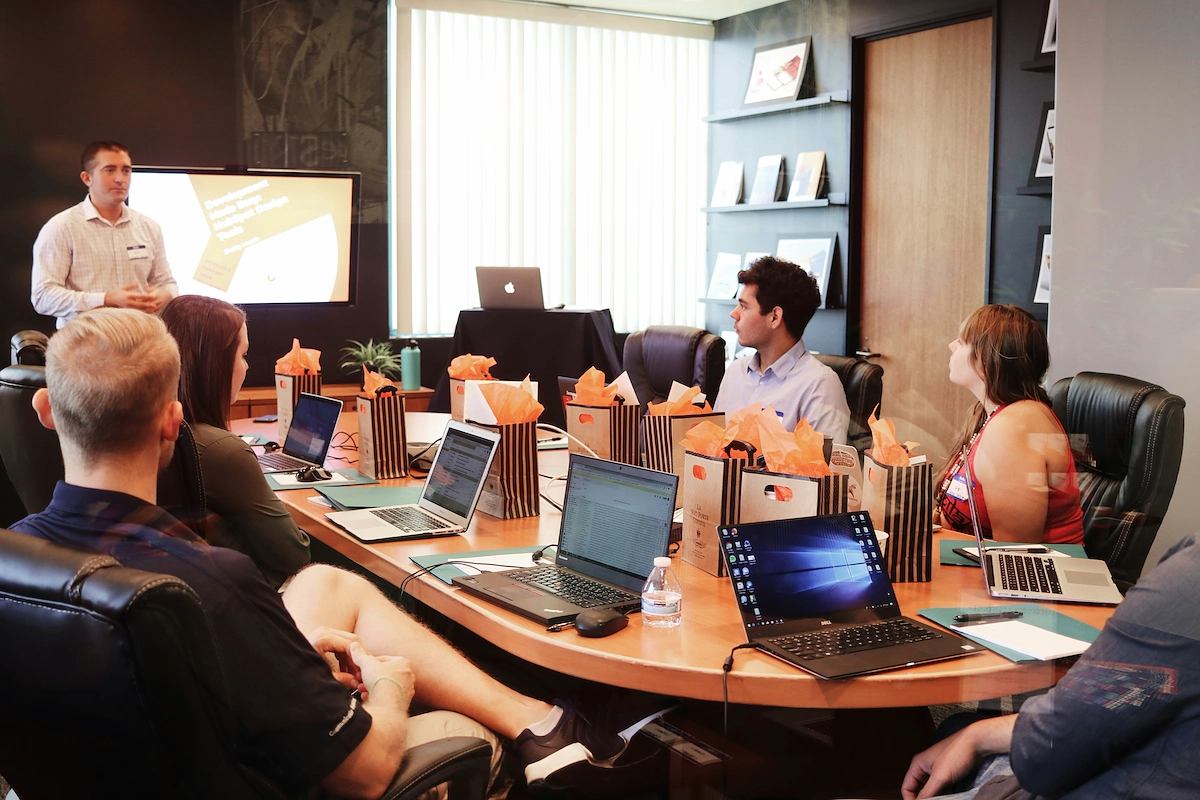Starting a non-CDL hot shot business is a rewarding venture that combines strong driving skills and logistical know-how with business savvy. The barrier to entry can be lower than traditional trucking, but that accessibility doesn't mean success comes easy.
This guide will take you through the practical steps of obtaining necessary licenses, securing funding, acquiring the right equipment, and finding your first loads to help you launch a successful non-CDL hot shot business in the U.S.
Step 1: Plan your business and validate the market
Research your market
First, confirm demand in your area. Use load boards like DAT One or Truckstop to search for non-CDL freight. Look at rates, popular destinations, and load frequency. This data shows you where the money is before you commit.
A mistake many new operators make is to assume work is everywhere. Your research might show that a 200-mile radius from your home base is a dead zone, which is valuable information to have upfront.
Calculate your startup costs
Your initial investment will be significant. A reliable used one-ton truck can cost between $30,000 and $60,000. A new 40-foot gooseneck trailer adds another $10,000 to $20,000 to that figure.
Beyond equipment, budget for insurance, permits, and cash reserves. An insurance down payment is typically $3,000 to $5,000. Getting your DOT and MC numbers will be around $1,000. You should also have at least $10,000 in operating capital.
Create your action plan
Here are 3 immediate steps to take:
- Analyze three potential lanes on a load board for rate and volume.
- Create a detailed budget listing all potential startup costs.
- Contact three insurance agents who specialize in commercial trucking for quotes.
Step 2: Set up your legal structure and get licensed
First, protect your personal assets. You might want to form a Limited Liability Company (LLC). This structure separates your business and personal finances. It also offers pass-through taxation, so you avoid the double taxation that corporations face.
Federal and state requirements
All interstate hot shot carriers need a USDOT number from the Federal Motor Carrier Safety Administration (FMCSA). This is your unique identifier. You will also need a Motor Carrier (MC) number to haul freight for hire across state lines. Both applications cost around $300 each.
After you apply for an MC number, there is a mandatory 21-day protest period. Many new operators get delayed here because their insurance is not filed correctly. Your insurance agent must file a BOC-3 and BMC-91 form with the FMCSA before your authority becomes active.
You must also complete the Unified Carrier Registration (UCR) annually. This verifies your active insurance coverage in all participating states. The fee is typically under $70 for a small fleet. Check your specific state's DOT website for any additional intrastate permits.
Here are 4 immediate steps to take:
- File for an LLC with your state's Secretary of State.
- Apply for your USDOT and MC numbers on the FMCSA website.
- Instruct your insurance agent to file your BOC-3 and BMC-91 forms.
- Complete your Unified Carrier Registration online.
Step 3: Secure the right insurance coverage
You will need two primary policies to operate. Commercial Auto Liability covers damages if you are at fault in an accident. Motor Truck Cargo insurance protects the freight you haul. These are non-negotiable for getting your authority active and booking loads.
Most brokers require a minimum of $1,000,000 in auto liability. For cargo coverage, $100,000 is the industry standard. Expect annual premiums to range from $12,000 to $20,000. Your initial down payment will likely be 20-25% of that total.
A frequent misstep for new carriers is to purchase a lower cargo policy to save money. This move often backfires, as it disqualifies you from many high-paying loads. Always confirm a broker's insurance requirements before you commit to a policy.
Find a specialized agent
You might want to work with an agent who only handles trucking insurance. They understand the FMCSA filing process. Consider getting quotes from providers like Progressive Commercial, OOIDA, or Great West Casualty. A general agent may not grasp the specific risks involved.
Here are 3 immediate steps to take:
- Request quotes from three agents who specialize in commercial trucking.
- Confirm quotes include $1,000,000 auto liability and $100,000 cargo coverage.
- Ask each agent how they handle the required FMCSA insurance filings.
Step 4: Acquire your equipment and find a location
Your truck and trailer are your primary assets. A one-ton dually truck, like a Ford F-350 or Ram 3500, is the industry workhorse. A used model with under 150,000 miles typically runs from $30,000 to $60,000.
For the trailer, a 40-foot gooseneck flatbed offers the most versatility. New trailers from brands like PJ Trailers or Big Tex cost between $10,000 and $20,000. Some new operators try to save with a smaller trailer, but this limits your load options significantly.
Parking and load securement
You need a legal and secure place to park your rig. Many residential neighborhoods prohibit commercial vehicles, so check your local zoning ordinances. Renting a spot in a commercial truck yard often costs between $150 and $400 per month.
You will also need proper securement gear. A full kit with straps, chains, binders, and tarps from a supplier like Mytee Products or US Cargo Control will cost between $1,500 and $2,500. Shippers expect you to arrive fully equipped.
Here are 4 immediate steps to take:
- Research used one-ton dually trucks for sale within a 200-mile radius.
- Contact two trailer dealers for quotes on a 40-foot gooseneck.
- Call your city or county planning office about commercial vehicle parking rules.
- Create a shopping list for securement gear from an online supplier.
Step 5: Set up your payment and invoicing system
Most brokers operate on Net 30 or Net 60 payment terms, meaning you get paid 30 to 60 days after you submit your invoice. This delay can strain your cash flow. To manage this, you can use a factoring company, which buys your invoices for a small fee (typically 2-5%) and pays you within 24 hours.
Getting paid on the spot
For direct clients or collecting accessorial fees like detention pay, you need a way to accept immediate payment. Waiting for checks or bank transfers is not efficient when you are on the road. A mobile payment solution is a great fit here.
For drivers who need to accept payments on-site, JIM offers a streamlined solution. With JIM, you can accept debit, credit, and digital wallets directly through your smartphone. Just tap and done. Other providers often charge 2.5% to 3.5%, but JIM is just 1.99% per transaction with no hidden costs or extra hardware.
This is particularly useful for collecting payment for a last-minute local delivery or when a shipper needs to pay for unexpected lumper fees. Here is how it works:
- Get Started: Download the JIM app for iOS.
- Make a Sale: Type the sales amount, hit sell, and ask your customer to tap their card or device on your phone.
- Access Funds: Your money is available right on your JIM card as soon as the sale is done. There is no wait for bank transfers.
Here are 4 immediate steps to take:
- Research three factoring companies that specialize in trucking.
- Create a professional invoice template with your business details.
- Download the JIM app to see how it works for on-the-go payments.
- Decide on your standard payment terms for direct clients.
Step 6: Fund your business and manage finances
Secure your startup capital
Equipment financing is often the most direct path to funding your truck and trailer. Lenders like Crest Capital focus on vehicle loans, using the equipment as collateral. This can make approval easier than a traditional business loan. Expect to need a 10-20% down payment.
You might also consider an SBA 7(a) loan. These government-backed loans can cover equipment and working capital. You will generally need a credit score of 680 or higher to qualify. The application process is more intensive, often taking 60 to 90 days.
Plan for your operating costs
Many new owner-operators get tripped up by cash flow. You need enough working capital to cover at least three months of expenses without income. Budget for $15,000 to $25,000 to handle fuel, insurance, and potential repairs before your first invoices pay out.
From day one, open a dedicated business bank account. Mixing personal and business funds creates a bookkeeping nightmare and can put your personal assets at risk. This simple step makes tax time much easier and keeps your financial records clean.
Here are 4 immediate steps to take:
- Request a pre-approval quote from an equipment financing company.
- Check your credit score to see if you meet SBA loan qualifications.
- Calculate your estimated operating costs for the first three months.
- Open a dedicated business checking account for your LLC.
Step 7: Build your team and streamline operations
Hiring your first driver
Most hot shot businesses start as a one-person operation. Once you are ready to expand, your first hire will likely be a driver. A common pay structure is 25-30% of the load’s gross revenue. This model gives your driver a direct stake in the business’s success.
Many new owners make the mistake of hiring a driver without first checking their Motor Vehicle Record (MVR). A poor driving history can make your insurance costs jump unexpectedly. You must also verify they have a current DOT medical card before they get behind the wheel.
Managing your daily workflow
You do not need complex software to start. A simple spreadsheet to track loads, revenue, and expenses is enough. Your load board apps, like DAT One or Truckstop, will handle most of your initial dispatching and route planning needs.
As you grow, a lightweight Transportation Management System (TMS) can help. Programs like TruckingOffice or ITS Dispatch manage dispatching, invoicing, and maintenance records for a manageable monthly fee. A solo owner-operator should target $150,000 to $250,000 in annual gross revenue to stay profitable.
Here are 4 immediate steps to take:
- Decide on a pay structure (percentage vs. per mile) for future drivers.
- Request a copy of your own MVR to understand the screening process.
- Create a simple spreadsheet to track your first 10 loads and all expenses.
- Set a realistic first-year gross revenue goal based on your market research.
Step 8: Find your first loads and build relationships
Master the load boards
Your first loads will likely come from load boards like DAT One and Truckstop. Instead of just grabbing any freight, use these platforms for intelligence. Track rates in your target lanes for a week before you book anything. This helps you understand what a good offer looks like.
A frequent error is to accept cheap freight just to keep the wheels moving. This devalues your service and can trap you in a cycle of low-profit runs. Know your cost-per-mile and refuse any load that does not meet your minimum rate.
Build direct customer relationships
While load boards are great for starting, direct freight is more profitable. You can bypass the broker and keep the full rate. Identify local businesses that need your services. Construction companies, farm equipment dealers, and oilfield suppliers are excellent prospects.
You might want to create a simple one-page sell sheet with your contact info and equipment specs. Visiting these potential clients in person can be more effective than a cold call. Building these relationships takes time but leads to consistent, high-paying work.
Work with a dispatcher
If you prefer to focus on driving, a dispatch service can find and book loads for you. They typically charge 5-10% of the gross load revenue. This can be a worthwhile trade-off, as it frees you from hours of phone calls and negotiation.
Before you commit, ask for a trial period. Some new carriers get locked into long-term contracts with dispatchers who do not perform well. A month-to-month agreement protects you as you find the right partner for your business.
Here are 4 immediate steps to take:
- Sign up for a trial on DAT One or Truckstop to monitor rates.
- Identify five local businesses that could become direct customers.
- Calculate your all-in cost per mile to determine your break-even point.
- Research two dispatch services and compare their fee structures.
Step 9: Develop your pricing strategy
Calculate your cost-per-mile
First, you need to know your break-even point. Add up all your fixed monthly costs like insurance, truck payments, and parking. Then, add your variable costs like fuel and maintenance. Divide that total by the miles you plan to drive each month to find your cost-per-mile (CPM).
For example, if your total monthly expenses are $6,000 and you drive 5,000 miles, your CPM is $1.20. Any rate below this means you are losing money. Many new operators skip this math and fail to see they are unprofitable until it is too late.
Set your market rates
Most hot shot loads pay by the mile. Use load boards like DAT One and Truckstop to see the going rates for your specific lanes. A good starting point for non-CDL hot shot work is often between $1.75 and $2.50 per loaded mile, but this fluctuates daily.
When you bid on a load, always factor in deadhead miles—the unpaid miles to get to the pickup. If a 400-mile load pays $800 ($2.00/mile) but you have 100 deadhead miles, your actual rate is only $1.60 per mile for all 500 miles you drive.
Here are 4 immediate steps to take:
- List all your monthly fixed and variable business expenses.
- Calculate your break-even cost-per-mile based on your projected mileage.
- Track the average rate-per-mile on one target lane for a full week.
- Determine your minimum acceptable profit margin above your CPM.
Step 10: Control quality and scale your business
Measure your service quality
Track your on-time delivery percentage and aim for 98% or higher. You should also monitor your cargo claims ratio. A ratio below 1% of all loads shows brokers you handle freight with care. These two metrics are what define your reputation.
Many new carriers focus only on revenue, but brokers and direct customers remember reliability. One late delivery or a damaged shipment can jeopardize a valuable relationship. Tracking your performance helps you spot problems before they become patterns.
Plan your growth
Once you consistently gross over $20,000 per month for three consecutive months, it is a strong signal that you can support a second truck. This benchmark shows you have enough steady work to cover the added expense and payroll.
With a second truck, spreadsheets become difficult to manage. You might want to look at a Transportation Management System (TMS) like TruckingOffice or ITS Dispatch. These programs help manage dispatch, invoicing, and maintenance for multiple units.
Here are 4 immediate steps to take:
- Set a target for a 98% on-time delivery rate for your first quarter.
- Create a simple log to track any cargo damage or claims.
- Establish a three-month revenue goal that would trigger your expansion plan.
- Schedule a demo for a TMS to understand its capabilities for future growth.
You have the roadmap to launch your non-CDL hot shot business. Remember, your reputation for reliability is just as valuable as your equipment. Stay focused, drive safe, and build your business one successful load at a time. You are ready for this.
And when you need to collect payment on the road, JIM turns your smartphone into a card reader. You can accept payments without extra hardware for a flat 1.99% fee. Download JIM to keep your cash flow moving.















